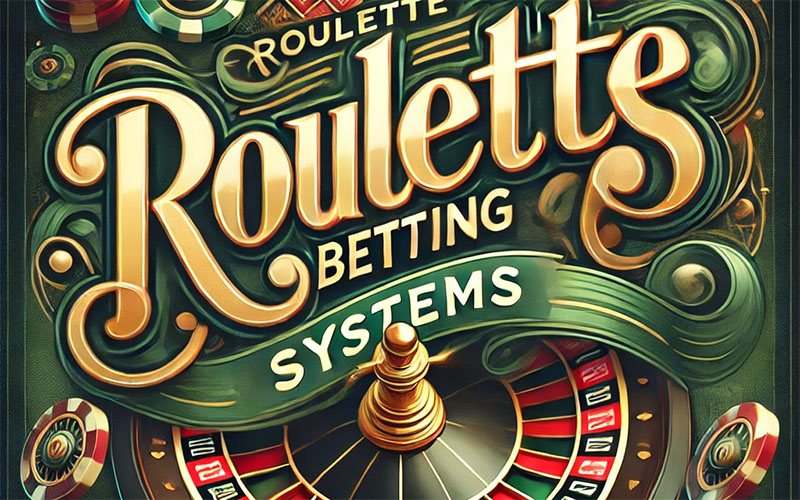
Type “how to win at roulette” into Google and you will be inundated with links for betting systems which promise guaranteed, no-risk profits. While different sites advocate different roulette systems, they are all the same thing in essence: attempts to manipulate the house edge by changing your wager according to the outcome of each spin.
Gamblers and mathematicians have tried for hundreds of years to devise the perfect roulette betting system – and they will be trying still hundreds of years from now, because none of them work in the long run. Indeed, some methods can even increase the risk of losing.
But there is no point in us telling you something is rubbish without explaining why, so we’ll show you the most common betting strategies out there and demonstrate why they are ultimately pointless and potentially harmful to your chances of leaving the table with a smile on your dial.
Progressive betting strategies
The vast majority of roulette systems are based on the concept of progressive betting. There are two categories:
Negative progressions
Raise your bet after a losing spin and lower it after a win. Most progressive roulette strategies follow this kind of pattern.
Positive progressions
As the name might suggest, this is the exact reverse of the negative progression: bets are increased after wins and lowered after losses.
Progressive roulette strategies are designed for the even-money outside bets. While each individual rolette system uses a different betting pattern to determine how much to adjust your stake after each result, all are based on the premise that every outside wager – be it red or black, odd or even, low or high – will win and lose roughly the same number of spins in the long term.
However, most wagering progressions are also geared around the notion that an even-money bet will lose more spins than it wins. That’s why negative progressions are more popular: the more spins you lose, the higher your stakes go and the more money you stand to win.
That’s the theory, at least. In actuality, however, these systems have no effect on the house edge and only manipulate the volatility of the game. So while the potential to win big might increase, so too does the risk factor.
Martingale roulette system
The Martingale is one of the oldest and most popular roulette betting strategies, and a perfect example of how negative betting progressions work. Some sources say this was the system employed by the legendary con artist and gambler Charles Wells when he famously broke the bank at the Monte Carlo Casino in the late 19th century.
The progression is a simple one. Start with a one-unit bet on your outside wager of choice. If you lose, double your stake; if you win, you can either walk away or return to the beginning and bet one unit.
The idea is that you only need a few wins in order to make a substantial profit. For example, let’s say we started with $5 on black and had the following results:
- Bet $5, loss
- Bet $10, loss
- Bet $20, win
In that scenario we would be $5 up despite suffering two losses out of three spins. That’s a 100 per cent profit despite losing 66.66 per cent of the time.
However, the flaws of the Martingale strategy become obvious once it’s put into practice. The key issue is that roulette tables have bet limits. It only takes a short losing streak with this system to leave you up against the maximum bet with a big debt and nowhere to go.
For example, let’s say we copped the following results on a table with a $100 maximum bet:
- Bet $5, loss
- Bet $10, loss
- Bet $20, loss
- Bet $40, loss
- Bet $80, loss
Here, we are $80 down after only five spins and have no chance to make it up under the Martingale system, as the next bet ($160) would exceed the $100 table limit. Sadly, this is an extremely common scenario.
More roulette betting progressions
Many have attempted to alter the basic Martingale roulette system so as to limit the risk while maintaining the potential to pocket steady profits. Ultimately, however, these alternative roulette strategies all suffer the same affliction: a run of losses can drain your bankroll in a flash.
Here are a few of the more popular roulette systems:
D’Alembert strategy
This is like a watered-down Martingale; the stakes still go up and down in an even manner, but the variation is far less drastic. Increase your bet by one unit after each loss and decrease it by one after each win. For example:
- Bet $1, loss
- Bet $2, loss
- Bet $3, win
- Bet $2, win
Fibonacci system
A funky variation on the D’Alembert system, this progression follows the Fibonacci sequence. Each number is the sum of the two which preceded it, and each step in the pattern corresponds to the amount of units to be wagered on the next spin. Move up one step after a loss and go back two after a win. For example:
- Bet $1, loss
- Bet $1, loss
- Bet $2, loss
- Bet $3, loss
- Bet $5, win
Labouchere strategy
Also called the cancellation system, here you predetermine the total amount you wish to win and write down a series of numbers which adds up to that amount. Each bet is the sum of the first and last numbers on the list. If a bet loses, add the amount of the stake to the end of the list; if a bet wins, cross out the first and last numbers on the list.
For example, if we aim to win $20 we might draw up a list like this:
1 2 3 4 5 3 2
And thus:
- Bet $3, win (cross out 1 and 2 on each end)
- Bet $5, win (cross out 2 and 3 on each end)
- Bet $8, loss (add 8 to the end of the list)
Continue playing until either you cross off all the numbers or your bankroll runs out.
Oscar’s Grind
Developed during the early 1960s, the Grind method is probably the most prominent example of a positive betting progression. There are four steps: one unit, two units, three units and four units. The progression only starts once you suffer a loss; otherwise, continue betting one unit per spin. Once you lose a bet, repeat your wager after each loss and move up one step after each win. Continue this process until you have a profit of at least one unit, then return to the start.
For example:
- Bet $1, loss
- Bet $1, win
- Bet $2, loss
- Bet $2, loss
- Bet $2, win
- Bet $3, win
As the win at $3 has put us $1 up overall ($5 lost, $6 won), we would now go back to the first step and start again with a $1 bet.
Predictive betting systems for roulette
We’ve established that progressive roulette betting systems are fatally flawed. But what about predictive strategies?
Instead of merely changing stakes according to the outcome of each spin, predictive methods incorporate physics, observation and rigorous data analysis with the aim of calculating precisely where the ball will land on the wheel. Some such methods rely on the use of bespoke roulette computers, while others require a good eye, a quick mind and plenty of patience.
There are several problems with predictive roulette systems. One is expense: specially designed computer programs cost thousands of dollars, as do cross-referencing techniques such as the JAA system. There’s also the fact that some of these methods, especially those involving technological aides, will get you booted out of most land-based casinos if you are discovered using them.
Furthermore, predictive strategies require a significant amount of time and application. Whether you’re cross-referencing past results, or studying a croupier’s ball release and spin speeds, or looking for a bias on the wheel, you won’t get anything like an accurate reading unless you watch hundreds of spins at the one table.
But the biggest issue is that predictive roulette betting systems often don’t work. Modern casino technology has rendered most approaches obsolete – for instance, those expensive roulette computers are useless on the vast majority of tables these days. The house can also detect biased wheels and predictable dealers with relative ease and swap them out before you have a chance to take any significant advantage. Even the best statistical cross-referencing systems are entirely ineffectual on around 70 per cent of casino roulette tables.
There’s one other problem: you can’t use predictive strategies in digital online roulette games. These titles are essentially random number generators dressed up with computer graphics, so there are no physical or human elements which can be exploited through observation and analysis. This is especially the case with visual ballistic techniques which require you to bet as late as possible, as all wagers must be placed before you click ‘Spin’ when playing real money roulette games online.
<2>How to master roulette strategy and systems
North Casino

$5000 + 200 Free Spins
18+ Gamble Responsibly. 100% up to $1000. 50% matched deposit up to $1000 on next four deposits. 60x wagering requirement. $10 min deposit on first bonus, $25 min on next four bonus offers. Max wager is $5 or 10% of total balance. Full Terms Apply
King Johnnie Casino

18+ Gamble Responsibly. Min $20 deposit. Max winnings $5000 on first three deposit bonuses or 6x deposit amount. Full terms.
OnlineCasinoGames

Welcome package of $10,000
18+. Gamble Responsibly. Full T&C's apply.
Roulette is one of the most popular casino games in the world, and it’s highly accessible at both land-based gambling venues and at online casinos.
The best roulette sites for Australians usually have a free-play mode, which essentially means you can practice your roulette strategies without having to commit real money.
In this environment with less pressure it will allow you to refine your strategy, noting what works and what doesn’t. You are likely to only find practice play casino games, like roulette, in RNG format.
Another huge benefit of online casinos for mastering roulette strategy, is that even if you play real money, it’s possible to play at lower stakes, than at a land-based gambling establishment.










